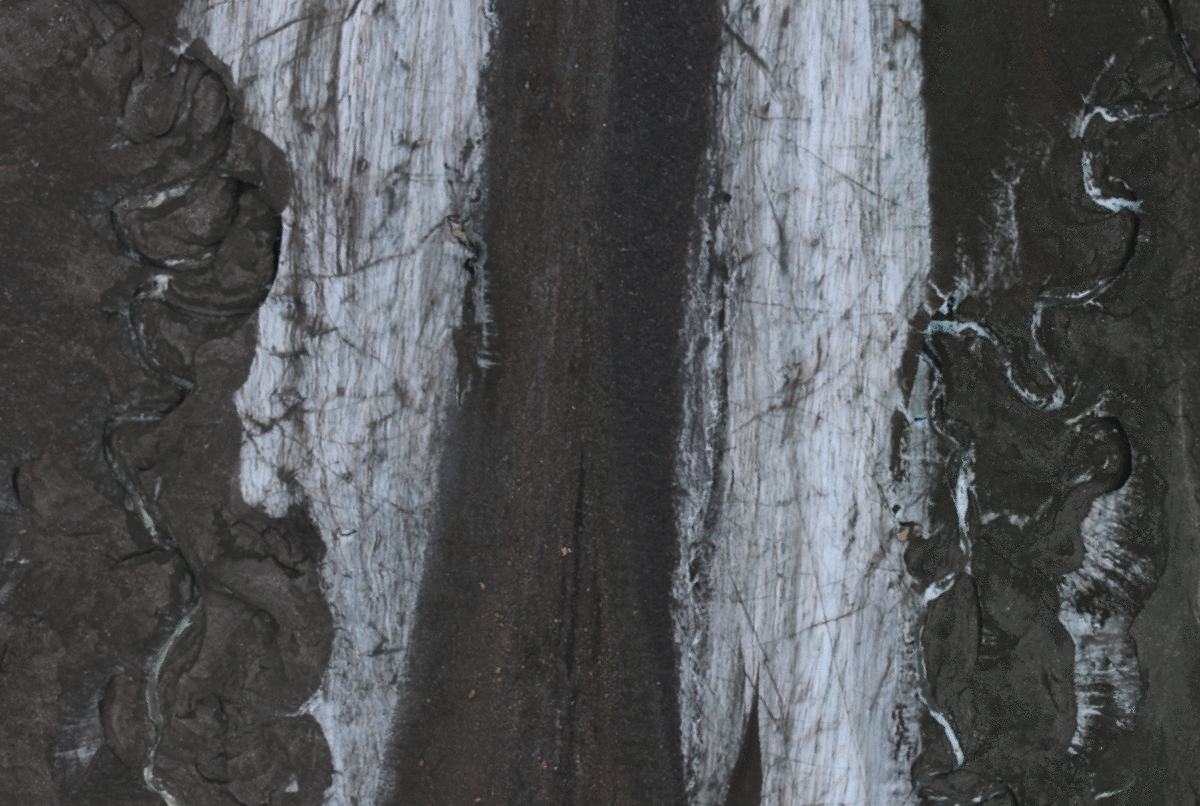What can thermal imagery tell us about glacier melt below rock debris?
 Looking straight down at a glacier as your eyes would see it and with thermal imagery.
Looking straight down at a glacier as your eyes would see it and with thermal imagery.Abstract
Rock debris on the surface of a glacier can dramatically reduce the local melt rate, where the primary factor governing melt reduction is debris layer thickness. Relating surface temperature to debris thickness is a recurring approach in the literature, yet demonstrations of reproducibility have been limited. Here, I present the results of a field experiment conducted on the Canwell Glacier, Alaska, United States to constrain how thermal data can be used in glaciology. These datasets include, 1) a measured sub-daily “Østrem curve” time-series; 2) a time-series of high resolution thermal images capturing several segments of different debris thicknesses including the measurements from 1); 3) a thermal profile through a 38 cm debris cover; and 4) two Advanced Spaceborne Thermal Emission and Reflection Radiometer (ASTER) satellite thermal images acquired within 2 and 3 min of a field-based thermal camera image. I show that, while clear sky conditions are when space-borne thermal sensors can image a glacier, this is an unfavorable time, limiting the likelihood that different thicknesses of debris will have a unique thermal signature. I then propose an empirical approach to estimate debris thickness and compare it to two recently published methods. I demonstrate that instantaneous calibration is essential in the previously published methods, where model parameters calibrated only 1 h prior to a repeat thermal image return diminished debris thickness estimates, while the method proposed here remains robust through time and does not appear to require re-calibration. I then propose a method that uses a time-series of surface temperature at one location and debris thickness to estimate bare-ice and sub-debris melt. Results show comparable cumulative melt estimates to a recently published method that requires an explicit/external estimate of bare ice melt. Finally, I show that sub-pixel corrections to ASTER thermal imagery can enable a close resemblance to high resolution, field-based thermal imagery. These results offer a deeper insight into what thermal data can and cannot tell us about surface debris properties and glacier melt.
 Oblique image of Canwell Glacier from the same helicopter flight used to capture the (straight downward-looking) images above (July 29th, 2016 11:00 AM local Alaska time).
Oblique image of Canwell Glacier from the same helicopter flight used to capture the (straight downward-looking) images above (July 29th, 2016 11:00 AM local Alaska time).Press for ‘What can thermal’
Anchorage Daily News Meet the man studying Alaska’s glaciers by living on one each summer
Juneau Empire Alaska Science Forum: Living on a glacier, thinking about rocks